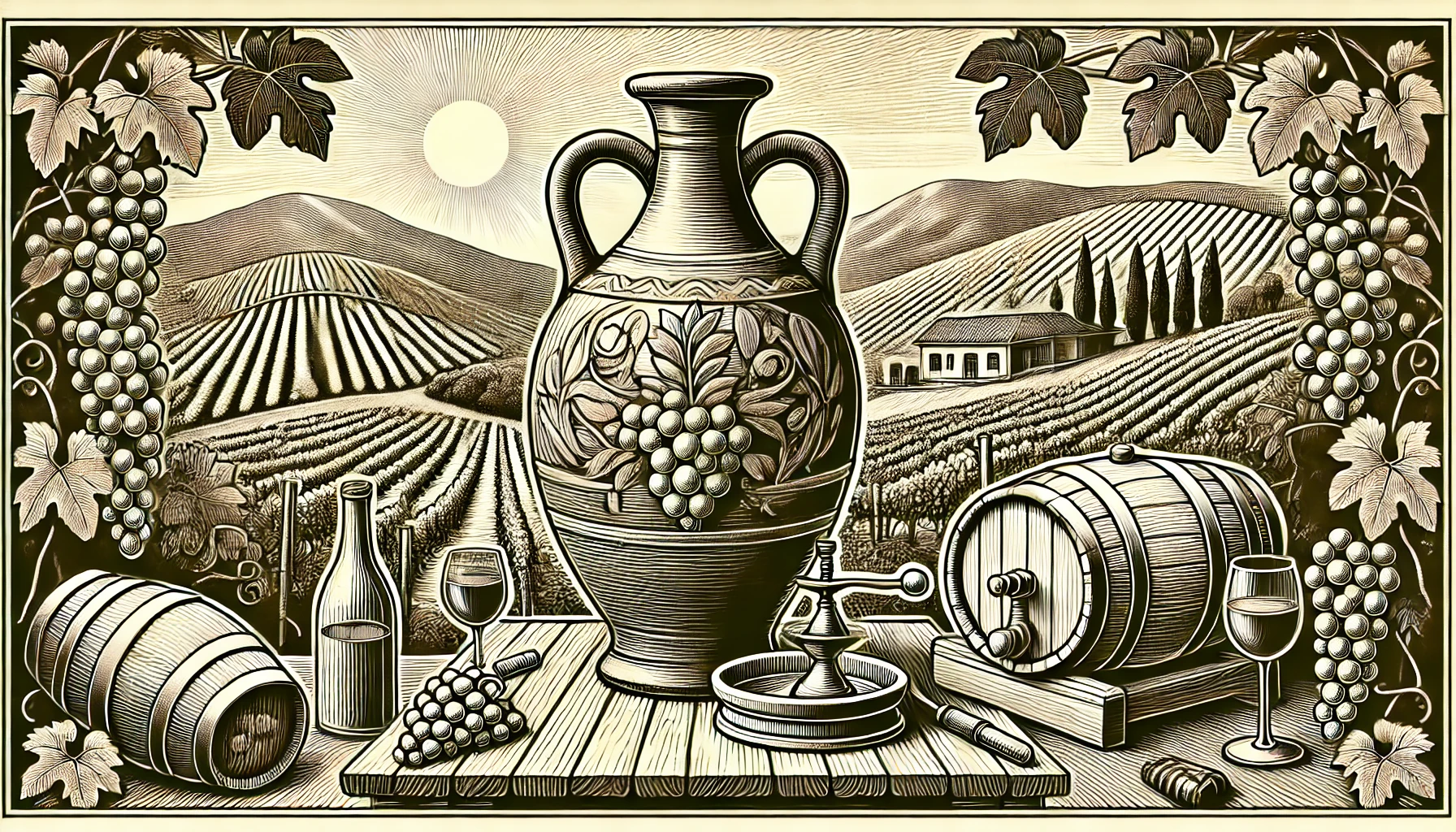
An amphora is a traditional clay vessel with deep roots in ancient winemaking. Civilizations like the Greeks, Romans, and Phoenicians widely used these containers thousands of years ago. It was primarily for fermenting and storing wine. These vessels feature a characteristic shape, with a narrow neck, two sturdy handles, and a pointed or rounded base, which allowed easy transport and storage. Ancient winemakers buried amphorae in the ground to maintain a stable temperature during fermentation. It is very effective in producing wine in various climates.
Amphorae come in various sizes, with some holding only a few liters, while others could store over a hundred liters of wine. Their porous nature allows micro-oxygenation, which softens tannins and develops unique flavor profiles in the wine. Clay as a material doesn’t impart flavors like oak barrels, so winemakers using amphorae highlight the purity of the grape and the wine’s terroir. The shape and structure of the amphora encourage natural fermentation processes, which enhances the complexity of the wine without modern interventions.
Today, winemakers focused on natural, biodynamic, and organic practices have revived the use of amphorae. The vessels align with minimal-intervention winemaking philosophies, allowing the wine to develop authentically. Countries like Italy, Spain, Georgia, and parts of South America embrace this ancient method in modern winemaking. The resurgence of amphora winemaking reflects a growing appreciation for traditional methods that produce unique, authentic wines.
Whether ancient or modern, amphorae symbolize craftsmanship and the deep connection between the earth, the vine, and the winemaker’s skill. For those seeking wines with history and character, wines fermented or aged in amphorae offer a distinctive experience.
Curious about more wine terms and insights? Visit our Wine Wiki section and explore the basic wine terms for expert definitions and tips!